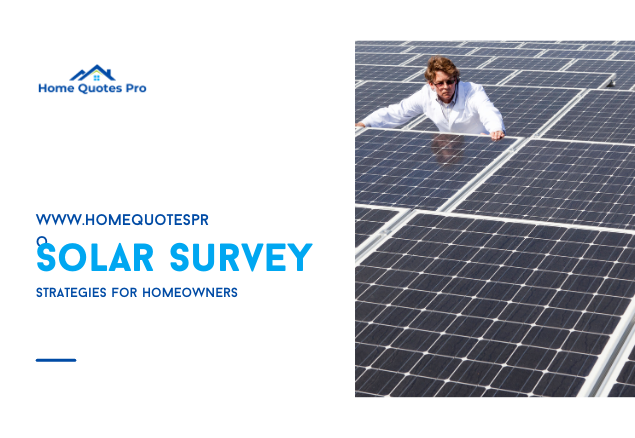Investing in solar energy for your home can lead to significant savings on energy bills and contribute to environmental sustainability. However, before installing solar panels, conducting a thorough solar survey is crucial to ensure optimal performance and return on investment. Here are effective solar survey strategies for homeowners:
1. Assess Your Energy Consumption
Start by evaluating your household’s energy consumption. Review your utility bills from the past year to understand your energy usage patterns. Identify peak usage times and calculate your average monthly and annual electricity consumption. This information will help determine the size and capacity of the solar system you need.
2. Evaluate Roof Suitability
The suitability of your roof is a key factor in the effectiveness of a solar installation. Consider the following aspects:
- Orientation: South-facing roofs typically receive the most sunlight, but east and west orientations can also work.
- Slope: Roofs with a slope of 15 to 40 degrees are ideal for solar panels.
- Shading: Identify any potential sources of shading, such as trees, chimneys, or nearby buildings, that could obstruct sunlight. Use tools like solar pathfinders or shading analysis software to assess shading throughout the year.
- Condition: Ensure your roof is in good condition and can support the weight of the solar panels. You may need to repair or reinforce your roof before installation.
3. Analyze Sunlight Exposure
Understanding the amount of sunlight your property receives is crucial for solar panel efficiency. Use solar mapping tools and resources such as:
- Google Project Sunroof: Provides estimates of solar potential based on your location.
- PVWatts Calculator: Developed by the National Renewable Energy Laboratory (NREL), this tool estimates the energy production and cost savings of a solar PV system.
- Local Solar Companies: Many solar providers offer free assessments and can provide detailed sunlight exposure analysis.
4. Determine System Size and Capacity
Based on your energy consumption and roof suitability, determine the appropriate size and capacity of your solar system. A professional solar installer can help you design a system that meets your needs and maximizes efficiency. Consider factors such as:
- Panel Efficiency: Higher efficiency panels produce more power in less space but may be more expensive.
- Battery Storage: If you want to store excess energy for use during non-sunny periods, include battery storage in your system design.
- Future Needs: Consider any potential increases in energy usage, such as adding electric vehicles or expanding your home.
5. Check Local Regulations and Incentives
Research local building codes, zoning laws, and permitting requirements for solar installations in your area. Ensure compliance with all regulations to avoid delays or fines. Additionally, look into available incentives, rebates, and tax credits that can offset the cost of your solar system. Programs such as the federal Investment Tax Credit (ITC) and state-specific incentives can significantly reduce your investment.
6. Obtain Multiple Quotes
Contact several reputable solar installers to obtain quotes for your solar project. Compare the quotes based on:
- System Design: Ensure each quote includes a detailed design plan tailored to your energy needs.
- Equipment Quality: Compare the quality and efficiency of the solar panels and inverters offered.
- Warranty: Review the warranties provided for both the equipment and the installation work.
- Price: Consider the overall cost, including installation, equipment, and any additional fees.
7. Evaluate Financing Options
Solar systems can be financed in various ways, including:
- Cash Purchase: Provides the highest return on investment and maximum savings over time.
- Solar Loans: Allow you to finance the system with monthly payments, often with low-interest rates.
- Leasing: Offers lower upfront costs but may provide less savings over time compared to ownership.
- Power Purchase Agreements (PPAs): You pay for the electricity generated by the system rather than the system itself.
Evaluate each option to determine the best fit for your financial situation and goals.
8. Monitor and Maintain Your System
Once your solar system is installed, monitor its performance regularly to ensure it operates efficiently. Use monitoring software or apps provided by your installer to track energy production and consumption. Schedule routine maintenance, such as cleaning the panels and inspecting the system for any issues, to maintain optimal performance.
Conclusion
Conducting a thorough solar survey involves assessing your energy consumption, evaluating roof suitability, analyzing sunlight exposure, determining system size, checking local regulations and incentives, obtaining multiple quotes, evaluating financing options, and monitoring and maintaining your system. By following these strategies, homeowners can ensure a successful solar installation that maximizes efficiency, savings, and environmental benefits.










